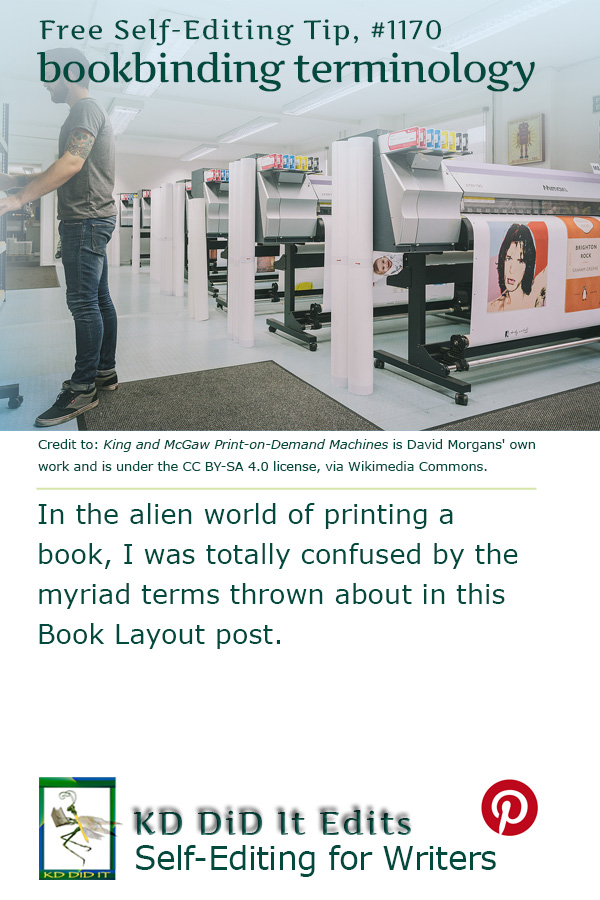Revised as of
27 July 2023
I remember when I first started with self-publishing . . . oh, lord. I had a headache for days trying to figure out what was being said. It certainly didn’t help that too many printers and publishers had different terms for the same thing!
The title of this post is a bit misleading, as it includes terminology for how a book is put together from actual “construction” and the various raw materials used in the assembly process for the outside of a book as well as its inside. There are some printing and image terms to get you started too.
It’s a foreign language, that’s for sure! And I know y’all’ll have questions about what some term means . . . I know I usually do!
Bookbinding, a.k.a. book bindery or book binding, is mostly about the printed book. Digital books don’t need a lot of physical construction!
Exploring Later . . .
This post can be a useful reference when you’re researching self-publishing or speaking with publishers. You may also want to read “Binding Choices (for Print)“, “Orphans, Rags, Runts, and Widows“, “Tracking and Kerning“, “Typographical Rivers“, and “Roman, a Typeface“.
Book Layout & Formatting Ideas, a.k.a. . . .
. . . typesetting, is all about the how the inside of your fiction or non-fiction book — whether print or eBook — looks and the experience it provides your reader. Explore which pages are required or optional, the order the pages should follow, whether the page should be verso or recto, the definitions of technical terms, each page’s content, and in-depth formatting that includes text alignment, margins, bleeds, the choice of font and sizes, linespacing, how and where to place graphics of all sorts, how to style chapter headings, the need for a table of contents, the inclusion of epigraphs, running heads and feet, and so much more. Yes, book cover design will also be covered. Do check with the style guide for your publisher or in your field for how your layout may differ in page order and requirements, whether it’s page order or formatting. Make a checklist.
At the very least, knowing more about book layout design will help you understand a book layout designer you may hire.
My research has evolved into a sharing of information with y’all. I’m hoping you’ll share with us any questions you’ve had on this subject that have been a bête noire for you from either end. If you found this post on “Bookbinding Terminology” interesting, consider subscribing to KD Did It, if you’d like to track this post for future updates.
NOTE: Example pages provide a sample of what should be found on that page and/or an explanation of the text you’ll need to write for that page. It will be noted when the layout differs between a print and an eBook.
| Bookbinding Terminology | |||||||||||||
| Book layout and Publishing | |||||||||||||
| Definition: The process of physically assembling a book of codex format from an ordered stack of signatures, sheets of paper folded together, which are bound along one edge with a thick needle and strong thread. The bound stack of signatures is enclosed in a flexible cover or a cover of stiffened boards. Finally, an attractive cover is placed onto the boards, and features the title of the book and the author’s name along with any desired artistic decorations.
By CategoriesAlphabetical
BOOK, EXTERIOR-RELATED
adhesive binding ascender back backing backing board baseline belly band bindings binding hole bleed Bifolio blind folio blurb book block book blurb book board BOOK, EXTERIOR-RELATED BOOK, INTERIOR-RELATED bulking casebound cloth, exterior cloth, interior CMYK codex colophon construction materials / terms copyright cover crop mark deckle descender digital printing double truck DPI dummy dust jacket edition endpaper face flap book flap copy flexible binding flyleaf fold folio fore edge four-color printing French flap front frontpiece full binding glassine grayscale groove guard half binding halftone hardcover head headband hinge hollowback IMAGE-RELATED ImageWrap imposition Islamic flap justification kerning landscape layflat binding leading leaf ligature marketing terms notching offset printing orphan page page count page creep page size pagination pasteboard pastedown perfect bound pica POD point portrait ppi quarter binding rag recto RGB rounding running feet running head runt safe area sans serif serif shoulder signature Smythe sewn softbound spine spread square tail text block textblock spine TEXT-RELATED three-quarter bound tracking trim verso volume widow |
|||||||||||||
| BOOK, EXTERIOR-RELATED | |||||||||||||
| Parts | |||||||||||||
| back | Definition: The side opposite the front. | 
Fig. 1. Back Cover of Colombo Hilton Hotel Construction Fraud on Sri Lanka Government: Sri Lanka’s First Derivative Action In Law by Nihal Sri Ameresekere is under the CC BY-SA 3.0 license, via Wikimedia Commons. |
|||||||||||
|
Return to top or post contents |
|||||||||||||
| cover | Definition: An outer surface slightly bigger than the size of the pages (casebound) or the same size (softbound) and attached to the spine by a hinge mechanism, that includes the front cover design, back cover design, and spine.
Front and back covers are usually the same material as the spine, forming a one-piece protective “case” around the book. A.k.a. book cover Credit to: Cranky |
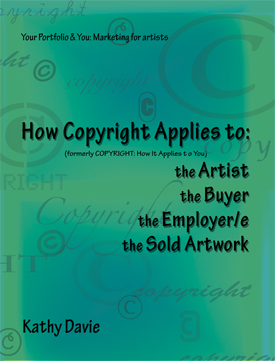
Fig. 2. Cover for How Copyright Applies . . . by Kathy Davie |
|||||||||||
|
Return to top or post contents |
|||||||||||||
| book board | Definition: The hard front and back boards used as the foundation for the covers of a book. This dates back to when they were made of wood. These days the boards are pulped or laminated materials pressed into large, flat sheets.
A.k.a. binder board, board, cover board, Davey board, mill board, museum board, pasteboard, strawboard Explore Paper Craft Panda to “Learn About the Different Types of Book Board”; it’s amazing. |
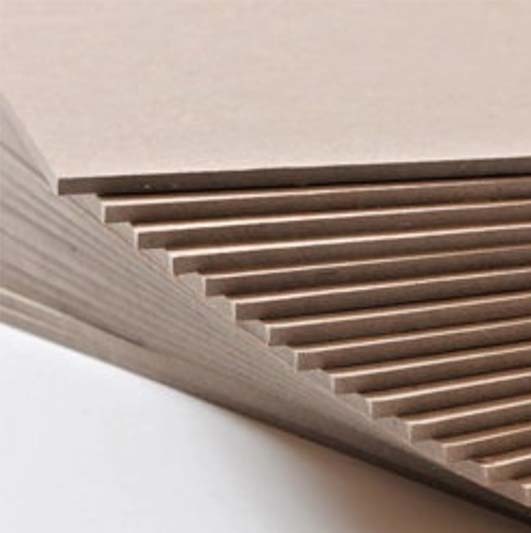
Fig. 3. Custom Cut Book Binder Board by Montana Bindery is available at their Etsy shop. |
|||||||||||
|
Return to top or post contents |
|||||||||||||
| case | Definition: The cover, i.e., the front, the spine, and the back.
It can also be a protective case in which to house the book itself. A.k.a. edition binding, hardcover book binding (both of which actually refer to casebound binding) |

Fig. 4. Open Book with Red Cover is in the public domain, via Free#SVG. |
|||||||||||
|
Return to top or post contents |
|||||||||||||
| flap, French | Definition: Part of the cover for a trade paperback that folds to the inside of the book similar to that found on dust jackets for hardcovers, making the cover stronger and more durable, yet lighter and more flexible than a hardcover. The flap also protects the book edges from wear and spine from shelf wear or other damage.
The width of the flap can range from narrow to wide and hold additional information from an author profile, photograph, bio, a book summary, a list of other publications by the author, etc. A.k.a. flap, gatefold |
||||||||||||
|
Return to top or post contents |
|||||||||||||
| flap, Islamic | Definition: A type of binding with an envelope flap that is attached to the back edge of the cover and is designed to wrap around the pages and tuck under the front cover, in order to protect the manuscript.
A.k.a. Ottoman Turkish binding |
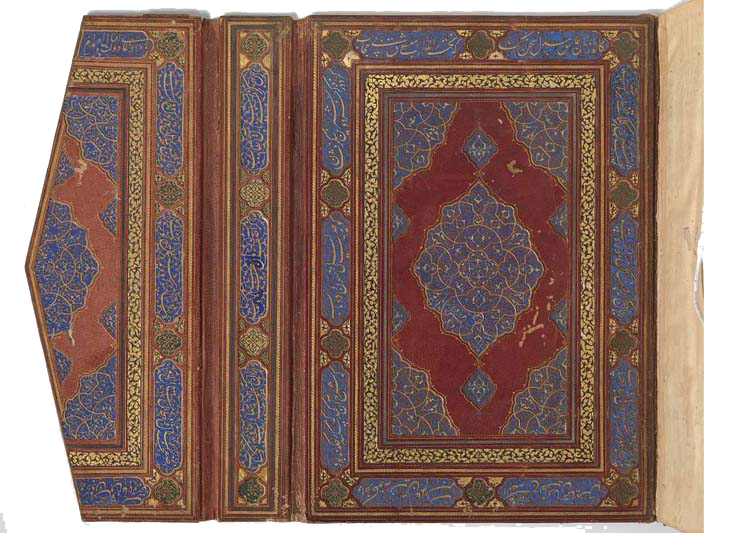
Fig. 5. Overlap and Inside Cover of a Khamsa (Quintet) of Nizami is in the Public Domain Mark 1.0 license, and is courtesy of the Metropolitan Museum of Art, via Picryl. |
|||||||||||
|
Return to top or post contents |
|||||||||||||
| endpaper | Definition: A page spread at the beginning and end of a book.
One half is pasted against an inside cover, and the other serves as the flyleaf, a loose page in the book. They are usually plain, but can be colored, patterned, or marbled. See also pastedown. A.k.a. end paper, end sheet, endsheet |
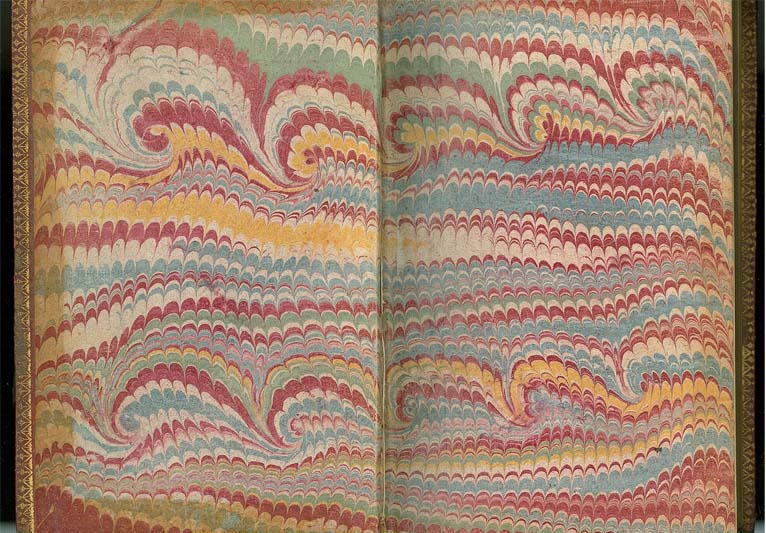
Fig. 6. Endleaves by Pietro Bembo is in the public domain and contributed by Benedetto Varchi, courtesy of the British Library, via Wikimedia Commons. |
|||||||||||
|
Return to top or post contents |
|||||||||||||
| pastedown | Definition: A piece of blank or decorative paper that functions as an endpaper, the size of a spread, with half of it glued to the inside cover of a hardcover book (front and back).
The unglued half forms the flyleaf. It is an essential part of a book’s structure, forming the hinge of the cover with the exterior binding and covering the inside edges of the book’s binding. A.k.a. board paper, end lining, endpaper, lining paper, paste-down Credit to: Paste-down |
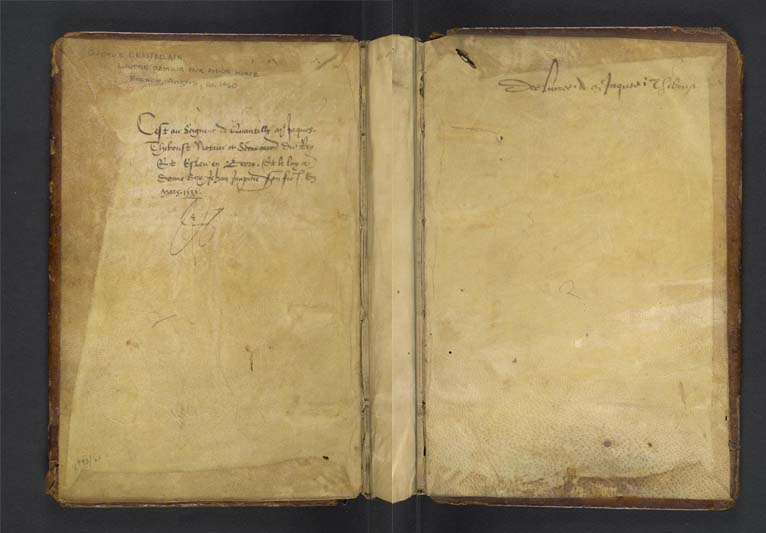
Fig. 7. Upper Pastedown with Inscription by Jacques Thiboust and Lower Pastedown, with Additional Inscription, MS 443/21, courtesy of the Rosenbach Museum and Library. |
|||||||||||
|
Return to top or post contents |
|||||||||||||
| face | Definition: The edge of book pages opposite the spine that is normally grasped when turning the pages.
Credit to: Cranky |

Fig. 8. Dutch Bible by David S. De Vault is under the CC0 license, courtesy of The National Gallery of Art and via RawPixel. |
|||||||||||
|
Return to top or post contents |
|||||||||||||
| flyleaf | Definition: The loose half of an endpaper at the front and back of a book that has nothing printed on it. | 
Fig. 9. Flyleaf 2 Recto is from the MS 51 Processional (Collection ID: 0003) from the Special Collections Repositories courtesy of Bryn Mawr College. |
|||||||||||
|
Return to top or post contents |
|||||||||||||
| fore edge | Definition: The vertical edge of the book opposite the spine, where the pages are unconnected.
The fore edge is usually left unadorned, but I’ve seen fore edges painted, gilded, marbled, spattered, and more. A.k.a. fore-edge |
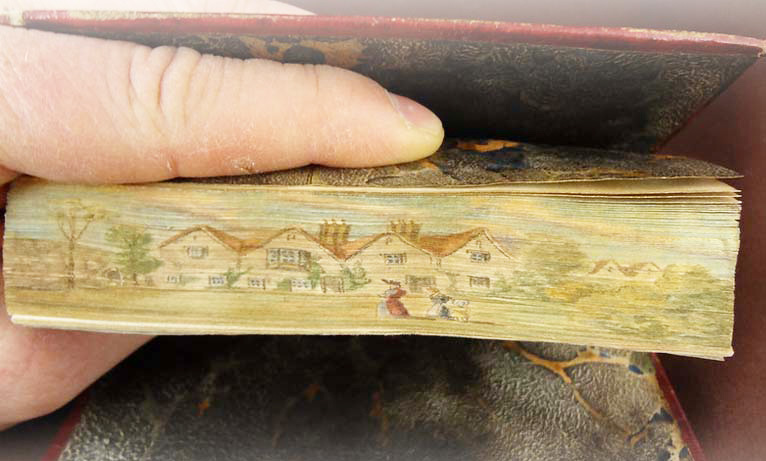
Fig. 10. Fore-edge Painting Example – CollectibleBooks.Org by Isaiah Cox is under the CC BY 2.0 license, via Flickr. |
|||||||||||
|
Return to top or post contents |
|||||||||||||
| front | Definition: The cover that the reader opens. |
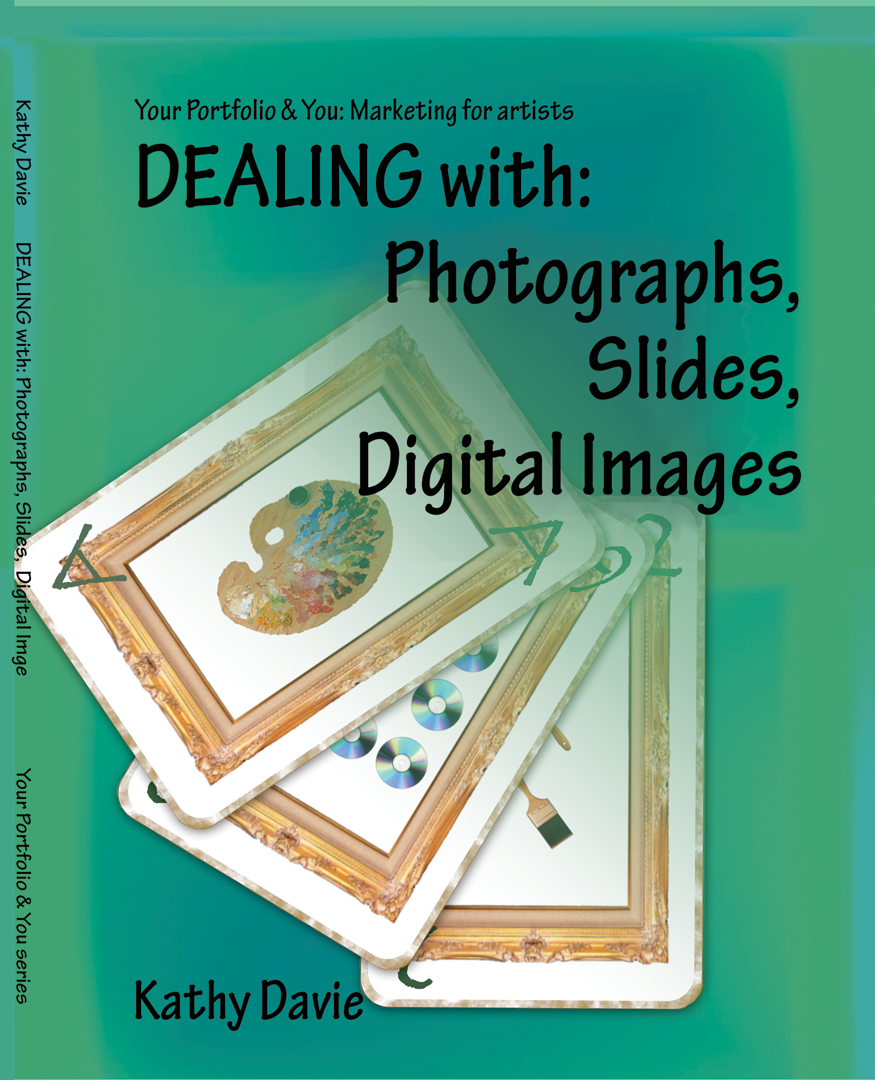
Fig. 11. Cover for Dealing with . . . by Kathy Davie |
|||||||||||
|
Return to top or post contents |
|||||||||||||
| groove | Definition: A visible, flexible joint between the covers and the spine of a book that forms the hinge that allows the book to open.
Explore Arthur W. Johnson’s post “A Joint Venture” on J Hewit and Sons Ltd to learn more about a variety of grooves from American to French to Harrison to ???. Or you can download Skin Deep, No.15 – Spring 2003, their biannual newsletter. A.k.a. channel, crease, French groove, French joint, gully, hinge, joint, outer hinge, outer joint shoulder |
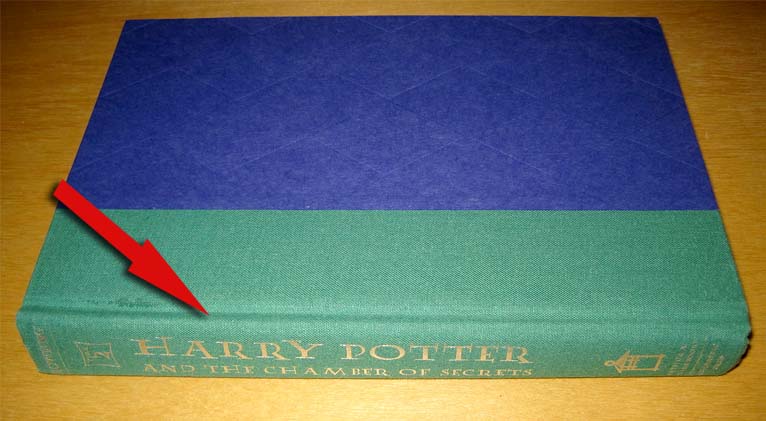
Fig. 12. Harry Potter Book 2, 1st American Ed. Without Dust Jacket is BrokenSphere‘s own work is under the CC BY-SA 3.0 license, via Wikimedia Commons. |
|||||||||||
|
Return to top or post contents |
|||||||||||||
| head | Definition: The top of the book when it is held to be read.
A.k.a. top edge |

Fig. 13. Woman Reading a Book by Nenad Stojkovic is under the CC BY 2.0 license, via Flickr. |
|||||||||||
|
Return to top or post contents |
|||||||||||||
| headband | Definition: The colorful strip at the spine edge of the book block.
A.k.a. endband, tailband (at the bottom) |
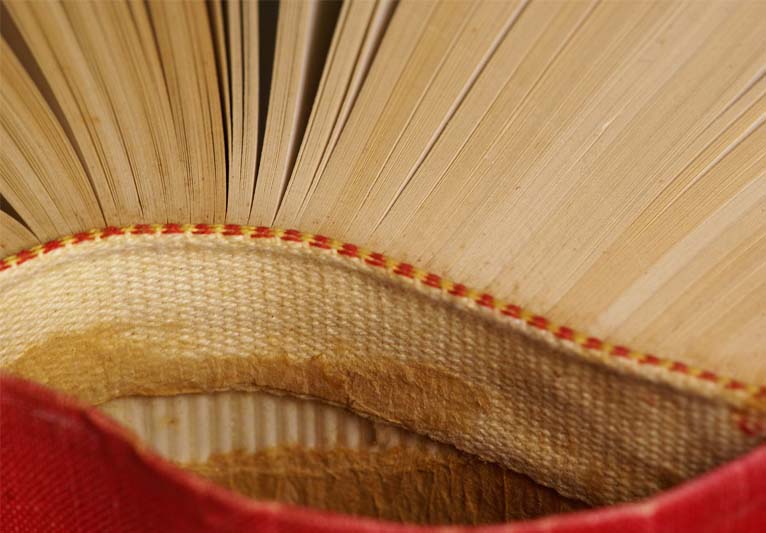
Fig. 14. Book Headband Exposed by Demeranda is under the CC BY-SA 4.0 license, via Wikimedia Commons. |
|||||||||||
|
Return to top or post contents |
|||||||||||||
| pasteboard | See book board. | ||||||||||||
|
Return to top or post contents |
|||||||||||||
| shoulder | Definition: The outer edge of the curved (rounded) text block spine against which the cover board fits. The shoulder is made when a book is rounded and backed.
A.k.a. abutment, butt, flange, groove, ledge, ridge |

Fig. 15. Structure of a Case Binding from an article, “Work of the Hand: Case Bindings”, Part I, by Henry Hebert. |
|||||||||||
|
Return to top or post contents |
|||||||||||||
| spine | Definition: The vertical edge of the book where all of the pages are connected.
The spine is a common place to include the title and author’s name. Whether the spine is flat backed or rounded and backed, it’s usually glued and lined with cloth and paper (super and paper linings). A.k.a. back, back backstrip, backbone, shelfback |

Fig. 16. Macklins Bible is in the public domain, via PxFuel. |
|||||||||||
|
Return to top or post contents |
|||||||||||||
| textblock spine | Definition: The back or folded edges of a group of signatures or the glued back edge of a block of leaves of an adhesive binding.
A.k.a. back, backbone, spine |
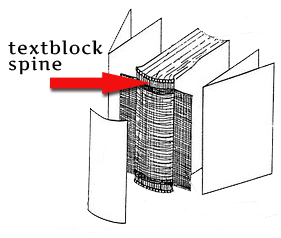
Fig. 17. The glued block of signatures. |
|||||||||||
|
Return to top or post contents |
|||||||||||||
| square | Definition: The corner edges of the cover that extend beyond the edges of the book block in a hardcover book.
A.k.a. corner |

Fig. 18. There are four squares to most books. |
|||||||||||
|
Return to top or post contents |
|||||||||||||
| tail | Definition: The bottom of the book when it is held to be read. Books are generally stored with their tails resting on the shelf.
A.k.a. foot |

Fig. 19. Person Reading a Book is in the public domain, via PxFuel. |
|||||||||||
|
Return to top or post contents |
|||||||||||||
| text block | Definition: The signatures without the cover or final binding.
Some say this includes the endpapers and spine linings, which is bound together and then attached to the case. Others say only the book block includes the endpapers, etc. A.k.a. body of the book, book clock, textblock |
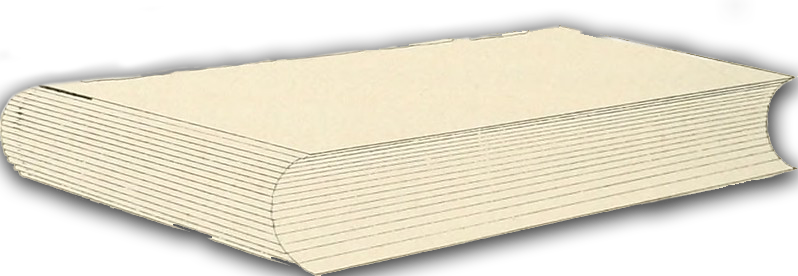
Fig. 20. Image from page 125 of Bookbinding and Its Auxiliary Branches, 1914, by Internet Archive Book Images is in the public domain, via Flickr. |
|||||||||||
|
Return to top or post contents |
|||||||||||||
| Bindings | |||||||||||||
| Definition: The process of assembling and securing written or printed pages within a cover. Modern commercial bindings include: Casebound: How the case surface is covered: More examples include coptic, Ethiopian, long-stitch, Islamic, wooden-board, limp vellum, calf, leather-bound, paper case, in-board cloth, cased cloth, embroidered, Bradel, stab binding (Chinese, Japanese, and Korean), girdle, secret Belgian (a.k.a. criss-cross, crisscross). A.k.a. book bindery Read more about bindings in “Binding Choices (for Print)“. |
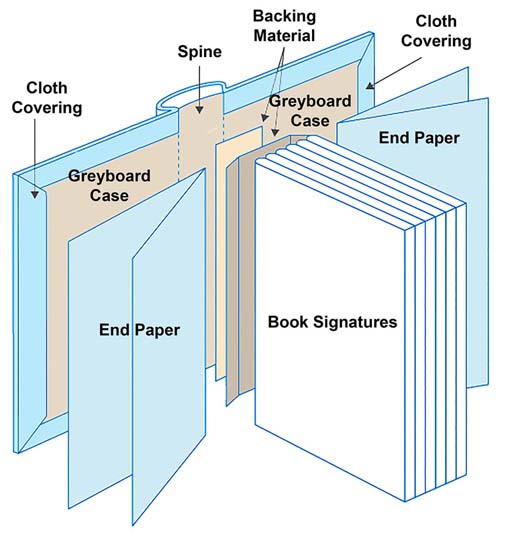
Fig. 21. Hardcover Book Anatomy is courtesy of Digital Print. |
||||||||||||
|
Return to top or post contents |
|||||||||||||
| adhesive binding | Definition: Binding in which single leaves are secured together solely with an adhesive applied to the text block spine.
A.k.a. perfect binding, softcover printing |

Fig. 22. On the left, it shows a top view of how the pages appear when bound to the spine. On the right it shows how the book fans open. |
|||||||||||
|
Return to top or post contents |
|||||||||||||
| casebound | Definition: A binding method in which the book case (cover) for a hardcover book is made separately from the textblock and later attached to it.
It uses super hinge endpapers and an adhesive to attach the textblock. In bookbinding, this is known as casing in and results in a casebound book. This is actually the overall term for any hardcover binding. A.k.a. case, case-bound, casebound, casebinding, cover |
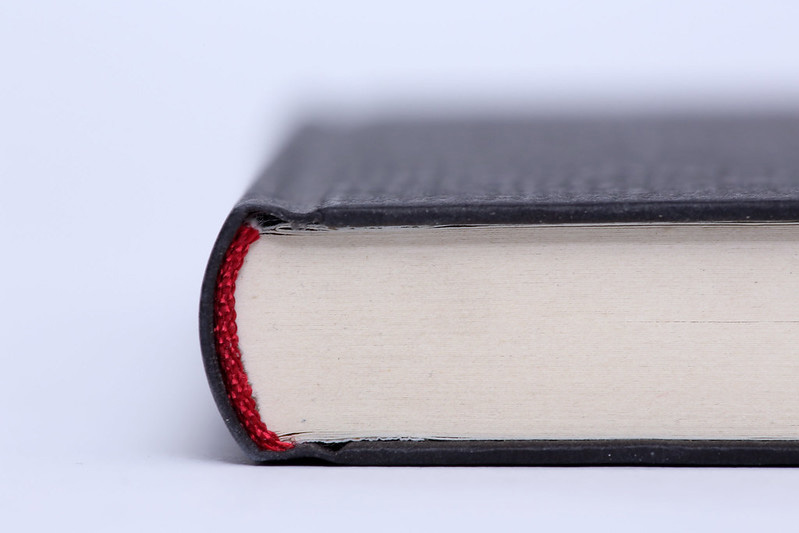
Fig. 23. Buch by Tim Reckmann is under the CC BY 2.0 license, via Flickr. |
|||||||||||
|
Return to top or post contents |
|||||||||||||
| codex | Definition: Around the 1st century A.D., the first book was a set of simple wooden boards sewn together with one or more quires of sheets of papyrus, vellum, or parchment folded together to form a group of leaves or pages.
The term is often used for ancient manuscript books, with handwritten contents. Plural: codices |

Fig. 24. Codex at Copan by Whirling Phoenix and Josh Kellogg is under the CC BY-SA 2.0 license, via Wikimedia Commons. |
|||||||||||
|
Return to top or post contents |
|||||||||||||
| flap book | Definition: A foldable booklet that can be used to organize images or information on a topic. The cover is usually cut into strips, each of which can be lifted to reveal its content.
A.k.a. “lift-the-flap” book |
||||||||||||
|
Return to top or post contents |
|||||||||||||
| flexible binding | Definition: Binding in which flexible sewing and flexible boards are used.
The cover is die-cut and folded, covered in cloth or made of single or double polyurethane coagulated fabric. Commonly bound with Smythe sewn for layflat ability. Most paperbacks use a flexible binding. The benefit is the concept and elegance of a hardcover book with the softness and flexibility of the paperback. A.k.a. flexibound book, flexicover, tight back |
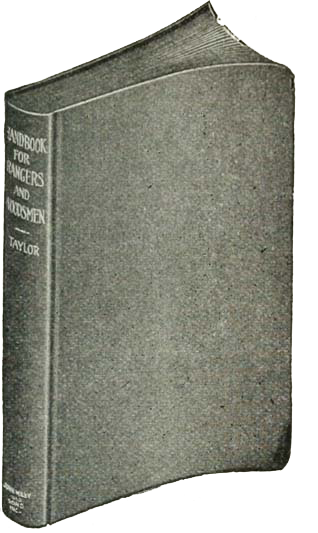
Fig. 25. Image from page 332 of the Canadian Forestry Journal by Internet Archive Book Images |
|||||||||||
|
Return to top or post contents |
|||||||||||||
| full binding | Definition: Binding with the same material all over, but that term is generally only used of leather.
A.k.a. full bound, full-bound, whole binding |

Fig. 26. Leather Bound Books by Chris Lawton is under the CC0 1.0 license, courtesy of Unsplash, via Wikimedia Commons. |
|||||||||||
|
Return to top or post contents |
|||||||||||||
| half binding | Definition: Binding for a book with leather or cloth on the spine and corners and a weaker covering material elsewhere.
A.k.a. half bound, half-binding, half-bound, half leather |
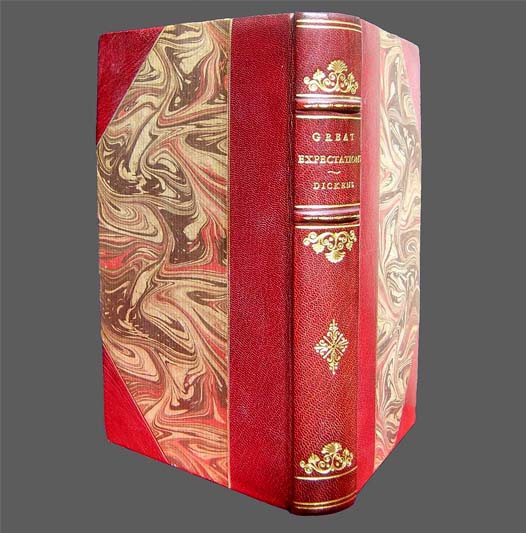
Fig. 27. Dickens’ Great Expectations in Half Leather Binding is James L Woodward‘s own work and is under the CC BY 3.0 license, via Wikimedia Commons. |
|||||||||||
|
Return to top or post contents |
|||||||||||||
| layflat binding | Definition: The binding choice allows for the book to be opened and lie flat.
A.k.a. Otabind® |
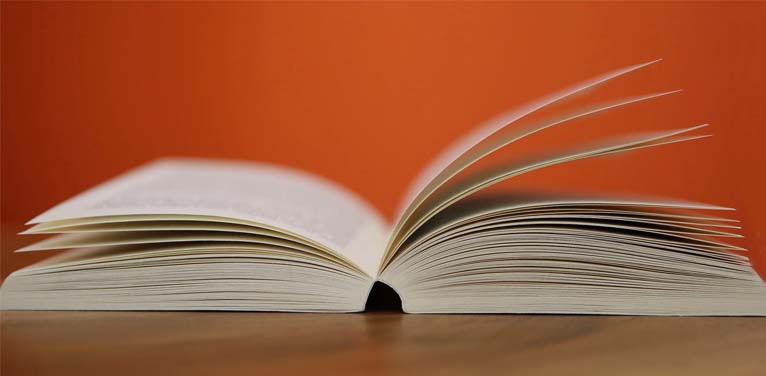
Fig. 28. White Softbound Book is in the public domain, via Pexel. |
|||||||||||
|
Return to top or post contents |
|||||||||||||
| perfect bound | Definition: Binding for a softcover book.
A.k.a. adhesive binding, perfect binding, soft cover binding, unsewn binding |

Fig. 29. On the left, it shows a top view of how the pages appear when bound to the spine. On the right it shows how the book fans open. |
|||||||||||
|
Return to top or post contents |
|||||||||||||
| quarter binding | Definition: Binding for a book with leather or cloth on the spine and a weaker covering material (usually paper) everywhere else.
A.k.a. half binding (used in 18th century), quarter bound, quarter-bound |

Fig. 30. Quarter-bound Book, Wyvern Bindery, Clerkenwell, London, UK, by Cory Doctorow is under the CC BY-SA 2.0 license, via Flickr. |
|||||||||||
|
Return to top or post contents |
|||||||||||||
| softbound | Definition: A type of binding used to create paperback books, by attaching the cover — usually paper or cardboard — to the pages.
Overall term for any paperback book. A.k.a. soft binding |
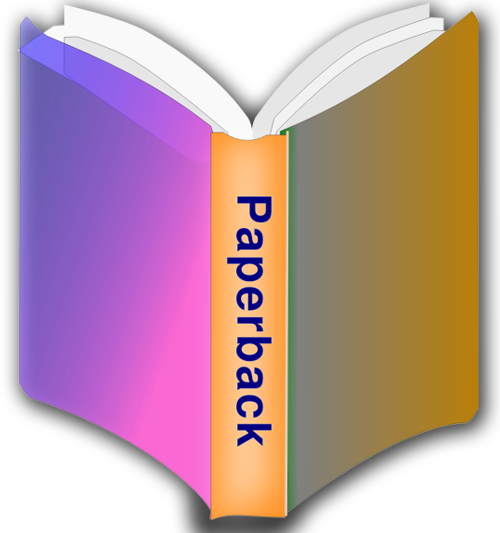
Fig. 31. Paperback is in the public domain, via Free*SVG. |
|||||||||||
|
Return to top or post contents |
|||||||||||||
| three-quarter bound | Definition: A type of binding in which the spine and the majority of the sides of a book are bound in one material and a second material covers the remaining sides; also used when the spine and a large portion of the corners are bound in the same material. | 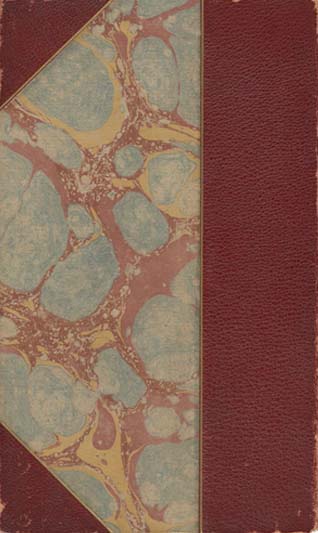
Fig. 32. Mukhtaṣar-i Bīst dar maʻrifat-i usṭurlāb is under the Public Domain Mark 1.0 license, courtesy of the Rare Book & Manuscript Library and Columbia University, via OPenn. — A three-quarter bound book using leather on the spine overlapping the front and back with triangular corners. |
|||||||||||
|
Return to top or post contents |
|||||||||||||
| Construction Materials / Terms | |||||||||||||
| backing | Definition: The process of shaping a ridge or shoulder on each side of the spine of a text block after rounding it, and prior to lining it.
Backing accommodates the thickness of the boards, and provides a hinge along which they swing. Backing also helps to prevent the spine of the text block from collapsing into a concave shape over time. |
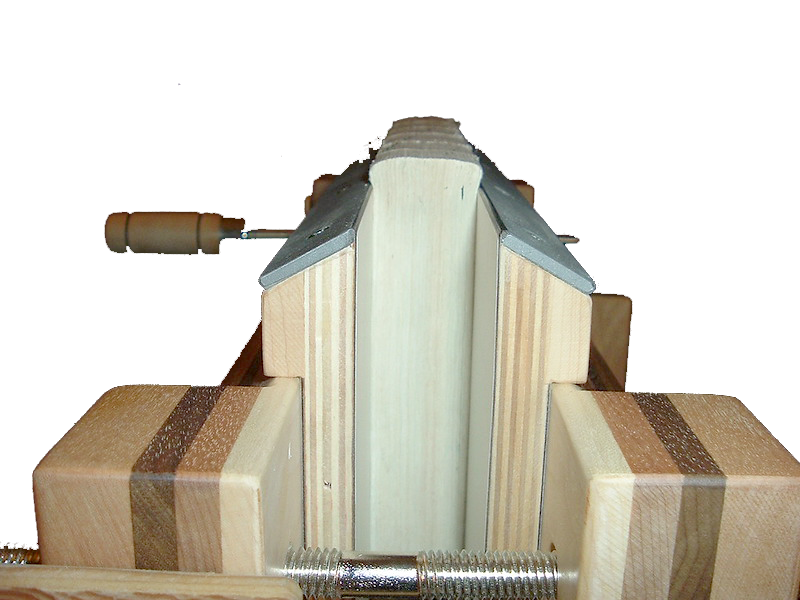
Fig. 33. Bookbinding Backing Irons by Jim is under the CC BY-SA 2.0 license, via Flickr. |
|||||||||||
|
Return to top or post contents |
|||||||||||||
| backing board | Definition: A pair of wedge-shaped wooden boards used to assist in backing, i.e., shaping a ridge or shoulder on each side of the spine of a text block.
It also refers to the covers of a book. |
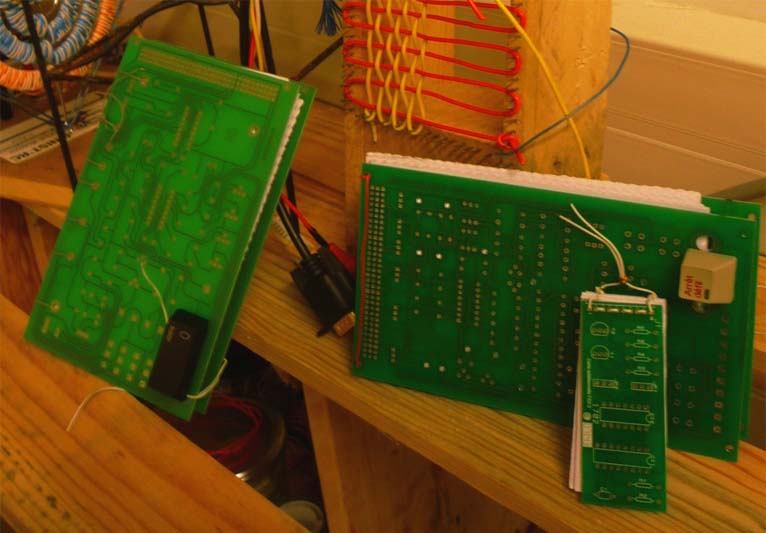
Fig. 34. A useful tool to create a rounded spine. |
|||||||||||
|
Return to top or post contents |
|||||||||||||
| binding hole | Definition: One of multiple holes along the left edge of a text block, allowing a punch-and-bind binding.
A.k.a. bind hole |
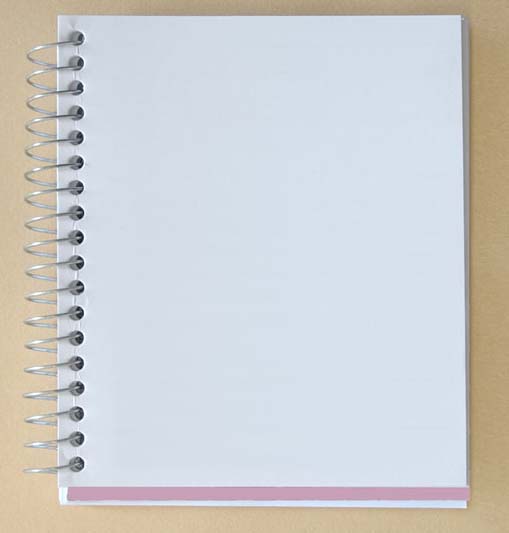
Fig. 35. Notebook is in the public domain, via PxFuel. |
|||||||||||
|
Return to top or post contents |
|||||||||||||
| bulking | Definition: The measurement of paper thickness expressed as how many pages it takes to equal one inch when compressed at 36 pounds per square inch (psi) for thirty seconds, as in “360 ppi” or 360 pages per inch. | ||||||||||||
|
Return to top or post contents |
|||||||||||||
| cloth, exterior | Definition: My own term to corral all the different materials used for the visible cover. | ||||||||||||
|
Return to top or post contents |
A.k.a. covering material |
||||||||||||
| cloth, interior | Definition: My own term to corral all the different materials used on the inside of the case . | ||||||||||||
|
Return to top or post contents |
|
||||||||||||
| digital printing | Definition: A printing method for hard copy books that uses a computer file.
The benefits to digital printing are:
The negatives to digital printing are:
A.k.a. digital book printing |
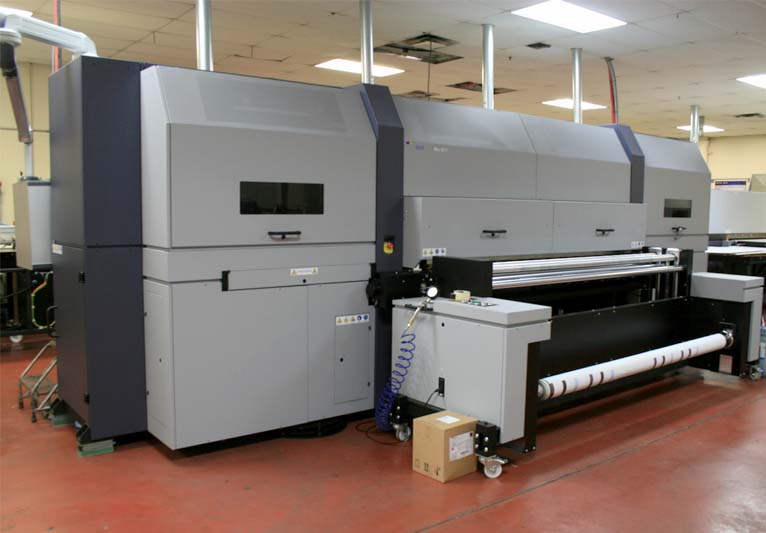
Fig. 36. Digital Printing Press by Coylegenec is under the CC BY-SA 3.0 license, via Wikimedia Commons. |
|||||||||||
|
Return to top or post contents |
|||||||||||||
| double truck | Definition: Content in a newspaper or magazine that extends over two pages and across the gutter. | 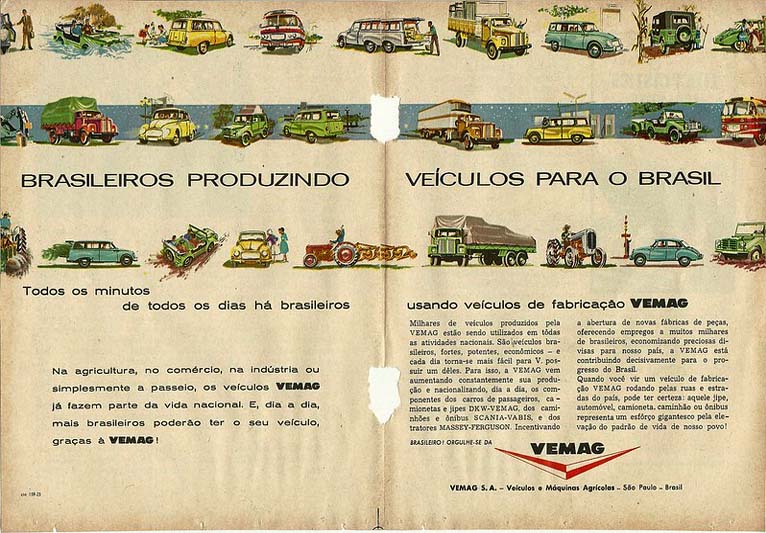
Fig. 37. DKW Two-page Ad by John Lloyd is under the CC BY 2.0 license, via Flickr. |
|||||||||||
|
Return to top or post contents |
|||||||||||||
| fold | Definition: A bend in paper to form pages, made by turning a sheet over upon itself — as to fold in half.
The fold along the backs of sections through which they are sewn, stapled, glued, or otherwise fastened to each other is called a back fold. They’ll be bundled to create signatures. |

Fig. 38. This A Realistic Paper Plane by chip.hedler demonstrates a fold in some paper and is under the CC BY 2.0 license, via Flickr. |
|||||||||||
|
Return to top or post contents |
|||||||||||||
| guards | Definition: Fan-folded light canvas or other strong cloth attached to a single paper strip.
Each of the folds of the guard is sewn to a signature of the book, then the paper strips of the guards are sewn together to form the book block spine. This process is usually referred to as “sewing on guards”. A.k.a. sewing guards, sewing stays |
||||||||||||
|
Return to top or post contents |
|||||||||||||
| hollow back | Definition: A book where the spine cover is not attached to the spine of the book block.
Most hardcover books have these. A.k.a. hollowback |

Fig. 39. Image from page 43 of Report of the Committee on Leather for Bookbinding, 1905, is courtesy of Internet Archive Book Images is in the public domain, via Flickr. |
|||||||||||
|
Return to top or post contents |
|||||||||||||
| imposition | Definition: Once the signatures are ready, the printer determines their proper order and assembles them to form the text block.
Credit to: What |
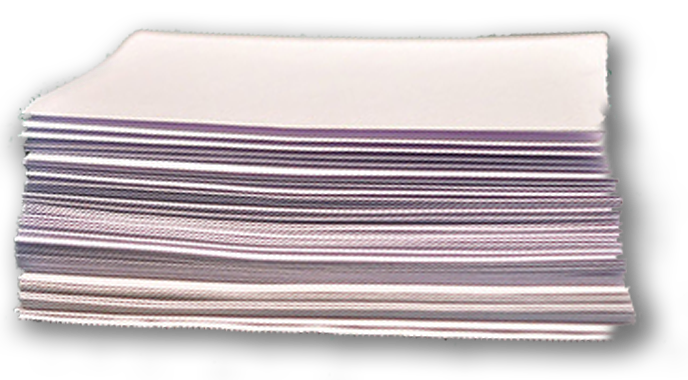
Fig. 40. Putting the signatures together. |
|||||||||||
|
Return to top or post contents |
|||||||||||||
| dummy | Definition: A physical representation of the book, as a mock-up of the final book, complete with all the text, visuals, and pagination in their correct positions.
It’s a test of the page imposition of a book prior to printing. A.k.a. layout |
||||||||||||
|
Return to top or post contents |
|||||||||||||
| notching | Definition: The process of cutting parallel groves into the spine perpendicular to the binding edge to strengthen adhesive binding.
A.k.a. sawed notches, sawn-in, sewing hole?? |
||||||||||||
|
Return to top or post contents |
|||||||||||||
| offset printing | Definition: A widely used printing method that is the most economical and efficient, if the print quantity is high enough and you won’t be making content changes too often.
It’s opposite is digital printing. The benefits to offset printing are:
The negatives to offset printing are:
A.k.a. litho, lithographic printing, lithography, offset lithography |

Fig. 41. Basedow Panel by Daniel Nikolaus Chodowiecki is in the public domain, via Wikimedia Commons. |
|||||||||||
|
Return to top or post contents |
|||||||||||||
| page creep | Definition: The inner sheets stick out farther than those closer to the outside due to the paper thickness. When the edges of the booklet are trimmed flush after stitching, the width of the innermost sheet will be the narrowest in the book, with each successive sheet being wider than the next one (working from the inside of the book to the outside). The printed area of each page will appear to get farther from the outside margin as you go from the inside of the book to the outside.
Books that are 40 pages or more or using thick paper need to take page creep into account. A.k.a. binder’s creep, creep, push out, thrust |
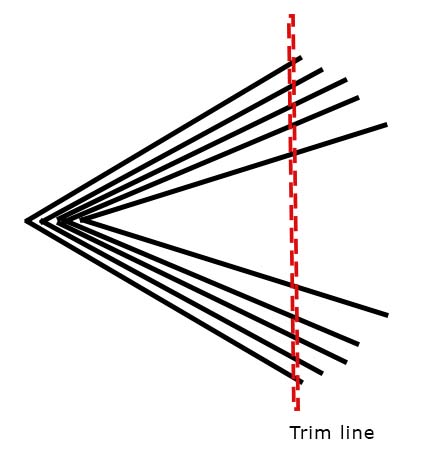
Fig. 42. Inner pages stick out far beyond outer pages. |
|||||||||||
|
Return to top or post contents |
|||||||||||||
| pica | Definition: Standardized as one-sixth of an inch, it’s the printer’s standard unit of measure for typography and layout.
See also point. A.k.a. em, pica em |
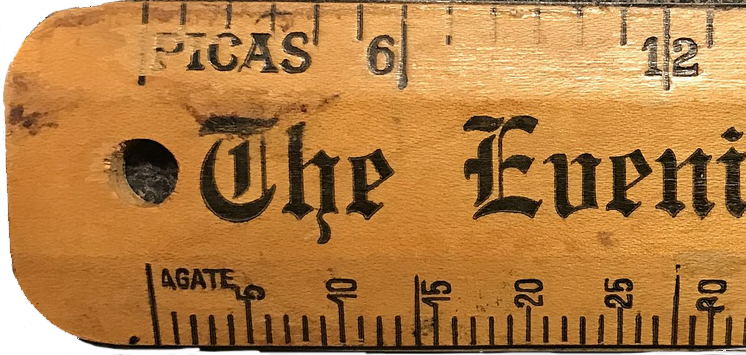
Fig. 43. The Evening Star Ruler by Jarek Tuszyński under the CC BY 4.0 license, via Wikimedia Commons. |
|||||||||||
|
Return to top or post contents |
|||||||||||||
| ppi | Definition: There are two ppi in printing:
|
||||||||||||
|
Return to top or post contents |
|||||||||||||
| rounding | Definition: The process of hammering the textblock spine into a convex shape (and a concave fore-edge) preparatory to backing.
Rounding diminishes the effect of swelling caused by the thickness of the sewing threads or the application of glue from an adhesive binding. It also helps to prevent the textblock spine from falling into a concave shape after years of use or of standing upright on a shelf. A.k.a. rounded, rounding and backing |
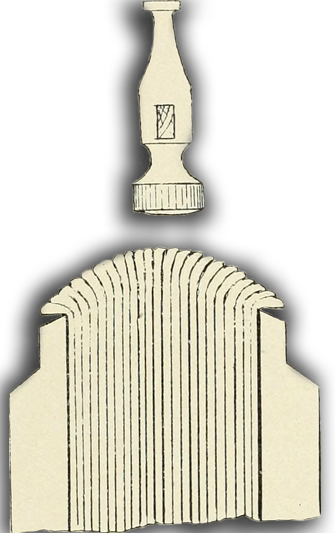
Fig. 44. Image from page 118 of Bookbinding and Its Auxiliary Branches, 1914, by Internet Book Archive Images is under the CC0 1.0 license, via Flickr. |
|||||||||||
|
Return to top or post contents |
|||||||||||||
| safe area | Definition: A book printer’s term that designates the area that is far enough away from the trim or gutter edges to be considered “safe” within the tolerances of the printer’s manufacturing equipment.
See bleed. |
||||||||||||
|
Return to top or post contents |
|||||||||||||
| signature | Definition: Two or more sheets of paper stacked and folded as a group.
A.k.a. gathering, quire, section |

Fig. 45. Grecquage by Colporteur was moved from French Wikipedia by Bloody-libu and is in the public domain, via Wikimedia Commons. |
|||||||||||
|
Return to top or post contents |
|||||||||||||
| Smythe sewn | Definition: A sewn binding that uses thread to sew through the folded centers of each signature, binding the pages together, and then to attach the case.
It is used for both hardcover and softbound books. Smythe sewn books open easily and lie a bit flatter than side sewn books. There are other sewing techniques, the Smythe version is the more popular. A.k.a. section sewn |
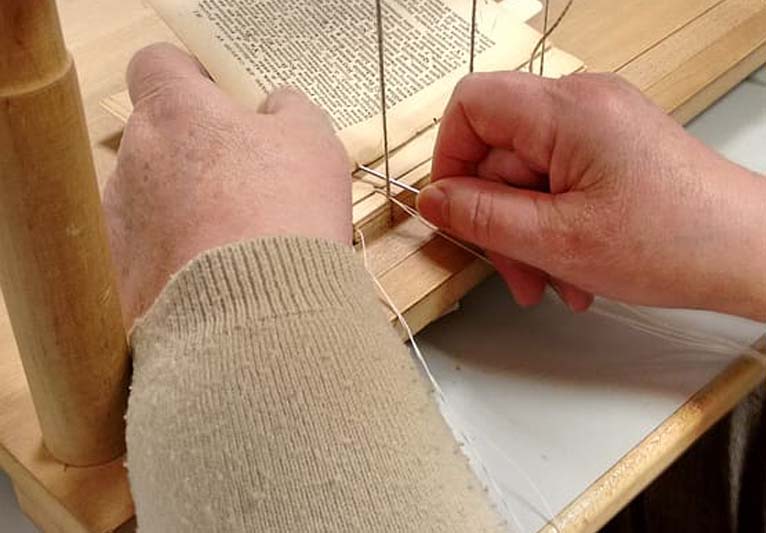
Fig. 46. Book Sewing is in the public domain, via PxFuel. |
|||||||||||
|
Return to top or post contents |
|||||||||||||
| spread | Definition: Two facing pages when the book is opened flat.
Not applicable to an eBook. |

Fig. 47. Spread is in the public domain, via PxFuel. |
|||||||||||
|
Return to top or post contents |
|||||||||||||
| trim | Definition: The size of the book when it is in its final form and occurs after the binding process.
Books are printed on large sheets which are then folded into signatures. The signatures are gathered to create the book block which is then trimmed on the top, bottom, and opening side separating the leaves of the bound book into pages. A book can be produced in any size, but printers and trade practice mostly use standard trim sizes for economy, getting the most out of the large sheet. |

Fig. 48. Douglas Jones provides step 7, “Trimming the Pages of Your Book”, The Plowing Jig Against the Spine of the Book by as part of a bookbinding tutorial with the Department of Computer Science at the University of Iowa. |
|||||||||||
|
Return to top or post contents |
|||||||||||||
| deckle | Definition: A rough face edge on all exposed pages, made by tearing or roughly chopping the paper and is only for appearance.
Deckle edged paper is used when a book bound in modern fashion is supposed to look older, as if published in the period when sections were not trimmed prior to being cased into a cover. A.k.a. deckled edge, feathered edge Credit to: Cranky |
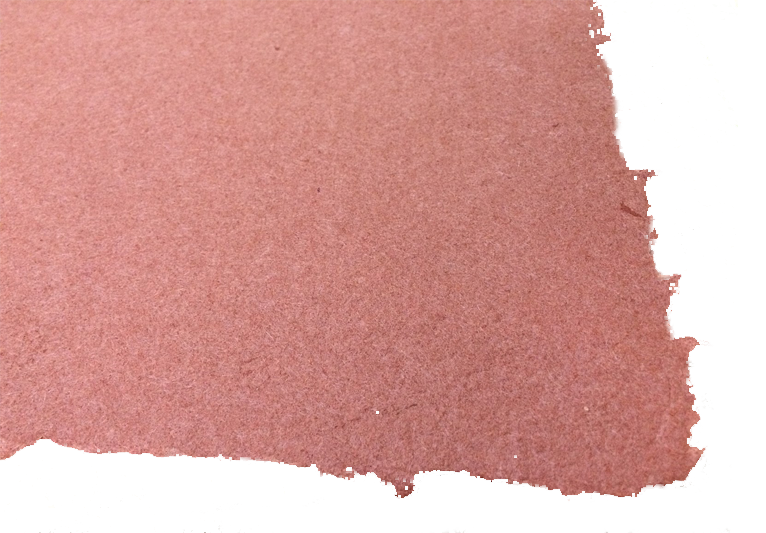
Fig. 49. Deckle Edge Flax Paper by Phase.change is under the CC BY-SA 4.0 license, via Wikimedia Commons. |
|||||||||||
|
Return to top or post contents |
|||||||||||||
| Marketing Terms | |||||||||||||
| belly band | Definition: A printed strip of paper that is wrapped around the book when you first get it. The purpose of it is to add an immediate “wow” factor to the book, to make it stand out where maybe an embossed logo would not get seen.
A.k.a. advertising wrap |
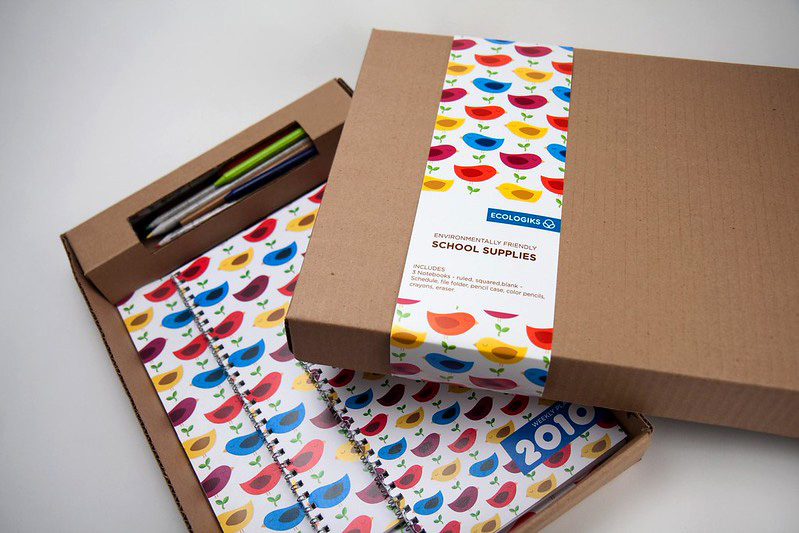
Fig. 50. Packaging by Marisa Torres at VFS Digital Design is under the CC BY 2.0 license, via Flickr. |
|||||||||||
|
Return to top or post contents |
|||||||||||||
| book blurb | Definition: A short description of the book’s main character and conflict, usually between 100 and 200 words, that traditionally is included on the inside cover or on the back of a book, functioning as a sales pitch intended to attract readers.
In eBook and self-publishing, a book blurb is what’s used on the main online sales page. The blurb should make a reader want to read more without giving too much of the story away. A.k.a. back-cover blurb, book description Credit to: MasterClass |
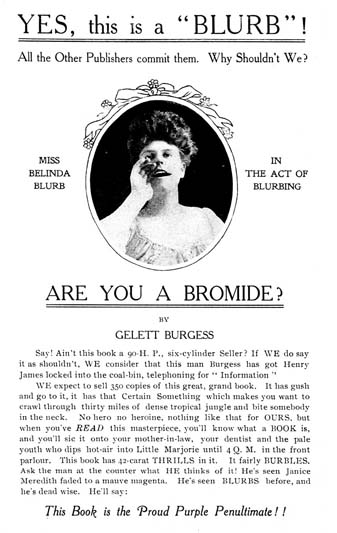
Fig. 51. Blurbing by Gelett Burgess is in the public domain, courtesy of the Library of Congress, via Wikimedia Commons. |
|||||||||||
|
Return to top or post contents |
|||||||||||||
| dust jacket | Definition: The printed paper covering for a hardcover with flaps that fold over inside.
Libraries use a transparent protective sleeve, a.k.a. jacket protector, to protect the dust jacket. A.k.a. book jacket, dust wrapper, jacket protector |
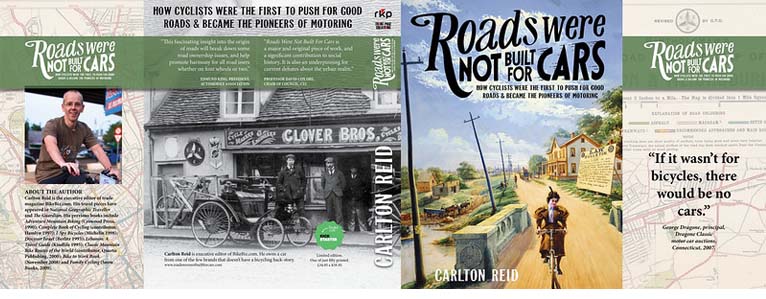
Fig. 52. Dust jacket for Hardback Roads Were Not Built For Cars by Carlton Reid is in the Public Domain Mark 1.0 license, via Flickr. |
|||||||||||
|
Return to top or post contents |
|||||||||||||
| edition | Definition: All of the copies of a book manufactured by a single printing and binding run.
First Edition always designates the original publication and is more popular with collectors. Credit to: Cranky |
||||||||||||
|
Return to top or post contents |
|||||||||||||
| flap copy | Definition: The brief description of the book that appears on the inside flap of the book cover. There is also the bio. And there is copy on the back of the book.
People often read the flap copy to see what the book is about, its genre, and perhaps the style (funny, sentimental, scary) and so forth. See also blurb. A.k.a. back cover copy |
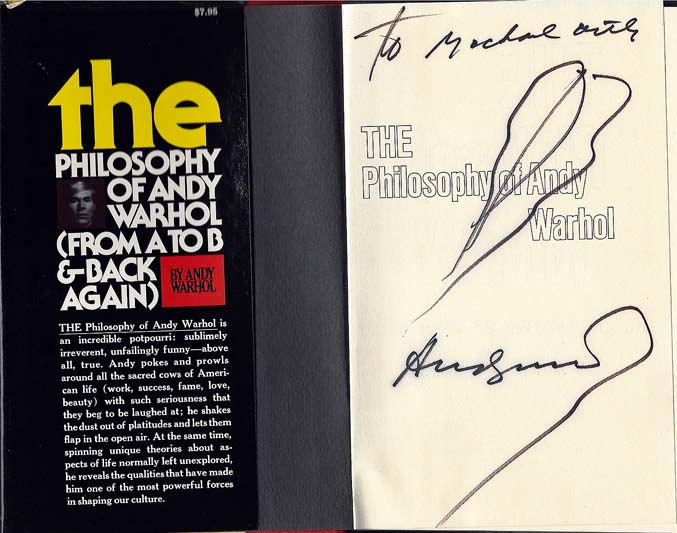
Fig. 53. This photo of Andy Warhol … Drawing was taken by Michael E. Arth is under the CC0 1.0 license, via Wikimedia Commons and shows the copy on the flap on the left. |
|||||||||||
|
Return to top or post contents |
|||||||||||||
| POD | Definition: The printer only prints out a book that someone has purchased:
The benefits: You don’t have to buy a stock of books, store them, nor mail them. The negatives: There is no price break for greater quantities. A.k.a. print-on-demand |

Fig. 54. Online Store by Mohamed Hassan, via PxHere, and Money Bag, via RawPixel, are both in the public domain. Ink Jet Printer and Shipping Truck are under the CC BY 4.0 license; both are via Vectorportal.com. |
|||||||||||
|
Return to top or post contents |
|||||||||||||
| volume | Definition: An individual book that is part of a set.
In periodical literature, volume refers to all of the issues in a series of time, such as a year or a quarter. |
||||||||||||
|
Return to top or post contents |
|||||||||||||
| BOOK, INTERIOR-RELATED | |||||||||||||
| book block | Definition: The complete interior of a book after the individual signatures have been printed, folded, and gathered together without the cover or final binding.
Some believe the book block is the same as the text block. A.k.a. text block |

Fig. 55. Image from page 125 of Bookbinding and Its Auxiliary Branches, 1914, by Internet Archive Book Images is in the public domain, via Flickr. |
|||||||||||
|
Return to top or post contents |
|||||||||||||
| colophon | Definition: A notice that credits the design, typography, imprint (the place of publication, the publisher, and the date of publication), the printer/publisher’s logo, and production of the book.
Such information can be found:
It sometimes includes an identifying mark, emblem, or device used by the printer or publisher on the title page, cover, spine, or jacket. Sometimes, it includes (or is) an inscription at the end of the book, e.g., a memorable one is “Finished, thank God.” See also copyright. |
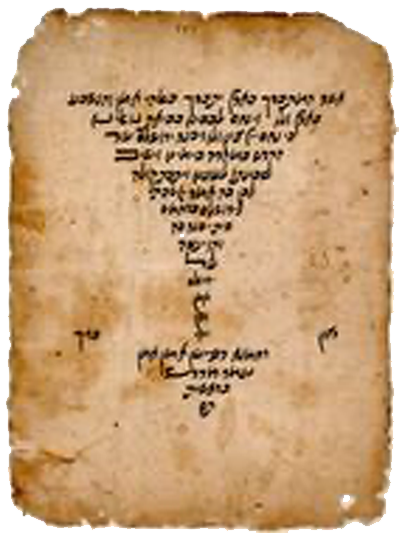
Fig. 56. Midrash David on Genesis, Colophon by David ben Abraham Maimuni, 1222 or 3-1300, is under the Public Domain Mark 1.0 license, courtesy of the Center for Advanced Judaic Studies Library, via the University of Pennsylvania Libraries. — And sometimes the colophon provides the information in a shape. |
|||||||||||
|
Return to top or post contents |
|||||||||||||
| copyright | Definition: A page after the title page that contains legal and printing information.
See also colophon. A.k.a. information page |
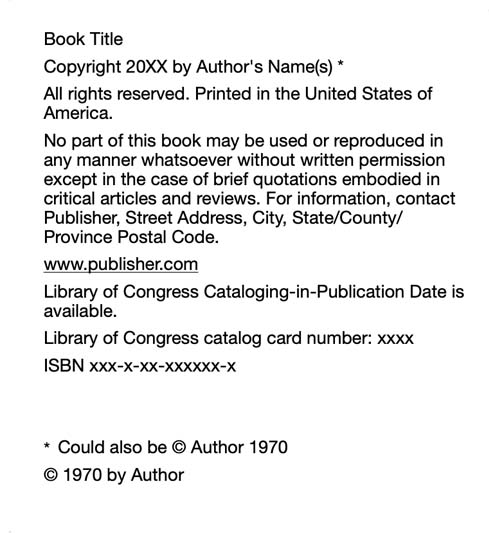
Fig. 57. A typical copyright page. |
|||||||||||
|
Return to top or post contents |
|||||||||||||
| frontpiece | Definition: A page prior to the title page containing an illustration.
A.k.a. frontispiece Credit to: Cranky |
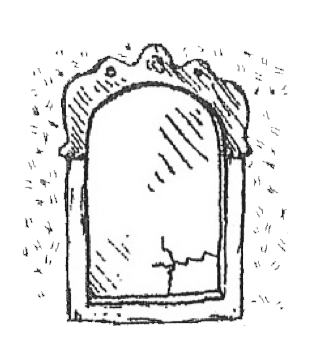
Fig. 58. One example of a frontispiece. |
|||||||||||
|
Return to top or post contents |
|||||||||||||
| glassine | Definition: A thin, nearly transparent paper most often used to provide protection between illustrations and text pages. | 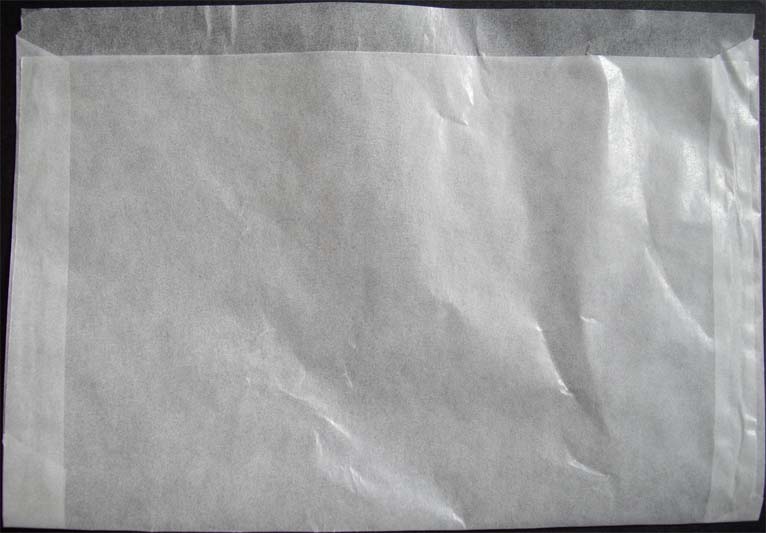
Fig. 59. Pergamintüte by Eigenes Werk is in the public domain, via Wikimedia Commons. |
|||||||||||
|
Return to top or post contents |
|||||||||||||
| leaf | Definition: A page with two sides, i.e., a front and a back.
Not applicable to an eBook. |

Fig. 60. Shows a page with text on both sides. |
|||||||||||
|
Return to top or post contents |
|||||||||||||
| page | Definition: A book page.
Not applicable to an eBook. |
||||||||||||
|
Return to top or post contents |
|||||||||||||
| Bifolio | Definition: A piece of paper or vellum folded once, creating two folios or leaves or four pages.
A.k.a. bifolium |
||||||||||||
|
Return to top or post contents |
|||||||||||||
| blind folio | Definition: A page number assigned to a page, but it’s invisible. | ||||||||||||
|
Return to top or post contents |
|||||||||||||
| folio | Definition: In the world of books, a folio can mean:
Abbreviation: fo, 2o |
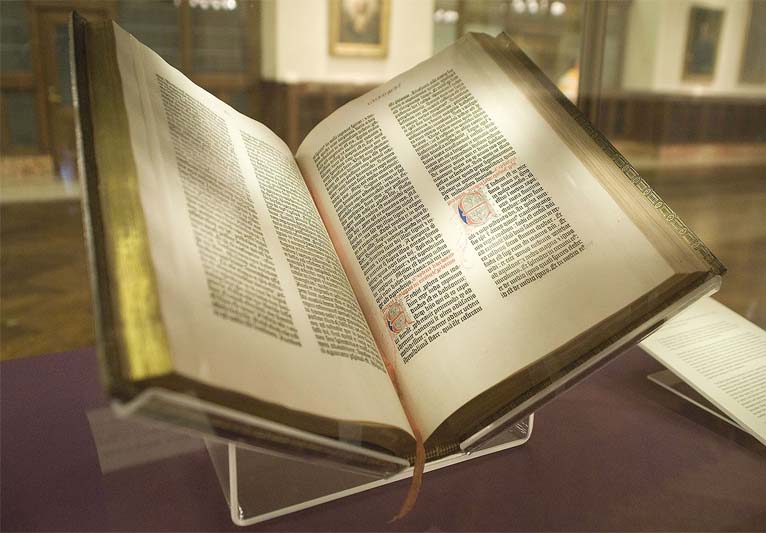
Fig. 61. Gutenberg Bible, Lenox Copy, New York Public Library, 2009 by NYC Wanderer (Kevin Eng) is under the CC BY-SA 2.0 license, via Wikimedia Commons. |
|||||||||||
|
Return to top or post contents |
|||||||||||||
| page count | Definition: For most books, your page count has to be a multiple of four.
A hard copy book has multiple components of pages that have been printed on a large sheet of paper and then folded into multiples of 8, 16, or 32 pages. Once folded to the size of the book, it becomes a signature. If the sheets hold 16 pages, we refer to the book as being printed in 16-page signatures. |
||||||||||||
|
Return to top or post contents |
|||||||||||||
| page size | Definition: The size of the page ranges widely:
|
||||||||||||
|
Return to top or post contents |
|||||||||||||
| pagination | Definition: Assigning page numbers (folios) to the pages in a specific style of numbering.
A.k.a. paging |
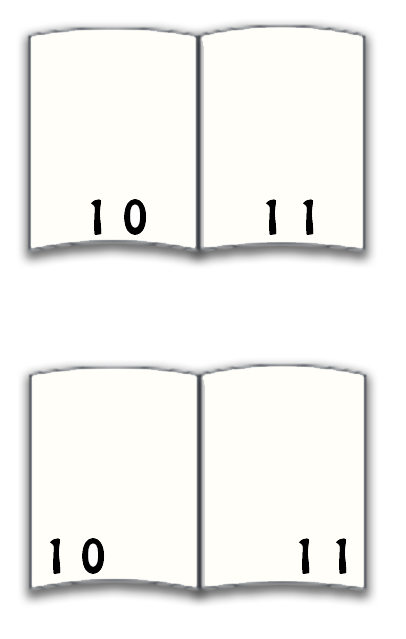
Fig. 62. Two examples of pagination at the inside and outside corners of a page. |
|||||||||||
|
Return to top or post contents |
|||||||||||||
| recto | Definition: The page on the right side.
A.k.a. front side, right side |
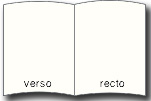
Fig. 63. Graphic shows positioning for the recto page. |
|||||||||||
|
Return to top or post contents |
|||||||||||||
| running head running feet |
Definition: Part of a book’s interior anatomy, a page element that shows the reader where they are in the book.
They can include the book title, author name, part title, chapter title, or subject headings. Running heads are at the top of the page. Running feet are at the bottom of the page, usually as page numbers. A.k.a. page header |
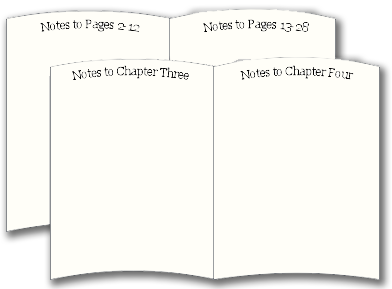
Fig. 64. Running heads or feet are useful navigational aids. |
|||||||||||
|
Return to top or post contents |
|||||||||||||
| verso | Definition: The page on the left side.
A.k.a. back side, left side |

Fig. 65. Graphic shows positioning for the verso page. |
|||||||||||
|
Return to top or post contents |
|||||||||||||
| TEXT-RELATED | |||||||||||||
| ascender/descender | Definition: Ascenders are the parts of letters that rise above the height of lower case letters, like the upward-extending parts of the “l”, “h”, or “t” while descenders are parts of letters that extend below the baseline as in the “tail” of the letters “y”, “g”, or “p”. | 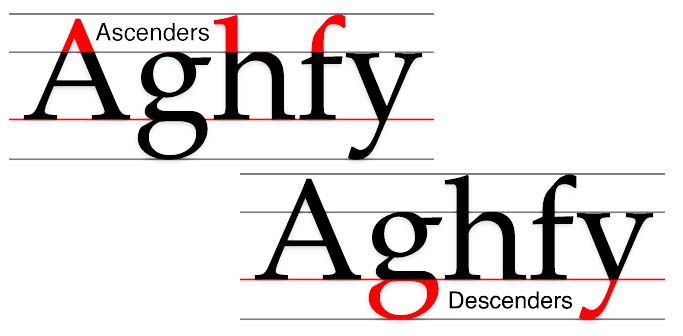
Fig. 66. Typographic Descenders is under the CC BY-SA 3.0 license, via Wikimedia Commons. |
|||||||||||
|
Return to top or post contents |
|||||||||||||
| baseline | Definition: Imaginary line on which letters sit. | 
Fig. 67. It’s pretty basic. The bottom of most letters sit on a baseline in this Descender titled image from Nilsjohan. The image is in the public domain, via Wikimedia Commons. |
|||||||||||
|
Return to top or post contents |
|||||||||||||
| justification | Definition: How the left and right margins of a text block align with the margin.
Choices include justification, left justification, right justification, and center justification. A.k.a. justify |
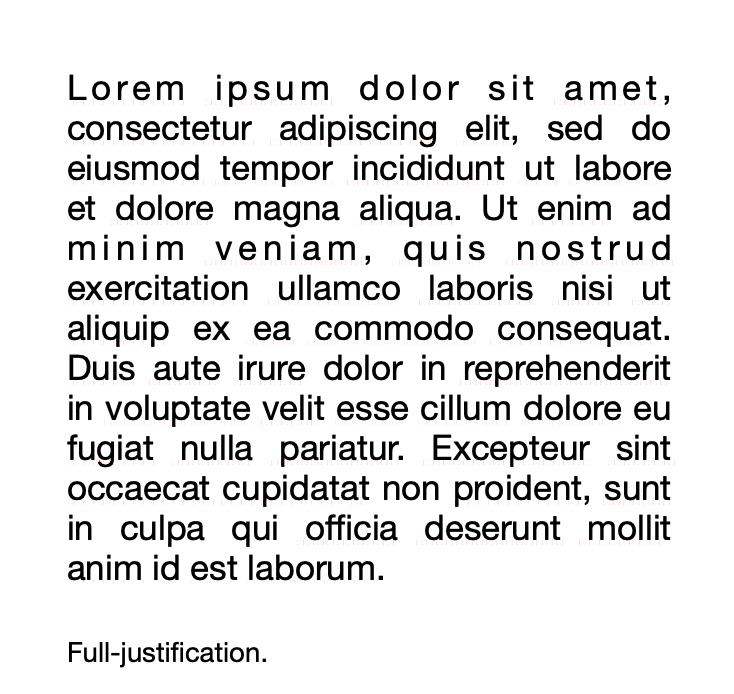
Fig. 68. An example of full justification. |
|||||||||||
|
Return to top or post contents |
|||||||||||||
| kerning | Definition: Adjusts the spacing between specific individual character pairs, pushing them apart or pulling them in. | 
WAR Kerning is Sherbyte’s own work and is in the public domain, via Wikimedia Commons. |
|||||||||||
|
Return to top or post contents |
|||||||||||||
| ligature | Definition: Some letter pairs were not suited to kerning, so such letters were joined together where the forms of the letters would otherwise create an awkward inter-letter spacing problem.
Frequently used for æ, œ, fi, fj and similar combinations. |
æ | |||||||||||
|
Return to top or post contents |
|||||||||||||
| leading | Definition: The measurement of space between the lines of type, usually measured from one baseline to the next.
A.k.a. line spacing, line-height |

Fig. 69. The difference between 1pt in the leading and 1.2. |
|||||||||||
|
Return to top or post contents |
|||||||||||||
| orphan, widow, rag, runt | Definition: Applies to a word or small group of words left dangling at the bottom of a paragraph or that is forced up to the top of the next page or column. | 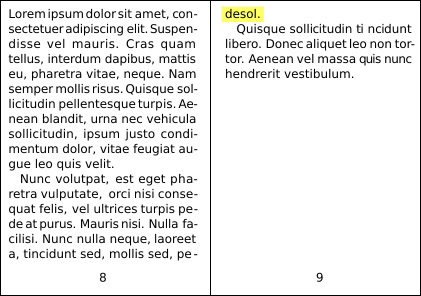
Fig. 70. Orphan-typesetting by Smoothhenry is in the public domain, via Wiktionary.com. |
|||||||||||
| point | Definition: There are 12 points in every pica.
Used most commonly to denote type size and leading, as in “12 point Minion on 15 points leading”. |

Fig. 71. A range of point-sizes for this font. |
|||||||||||
|
Return to top or post contents |
|||||||||||||
| sans serif | Definition: A typeface style that has no finishing strokes on the letters.
See also serif. A.k.a. gothic, grotesque, sans-serif, sans letterform, sans serif |
Sans Serif | |||||||||||
|
Return to top or post contents |
|||||||||||||
| serif | Definition: A typeface style that has finishing strokes on the letters.
See also sans serif. A.k.a. roman |
Serif | |||||||||||
|
Return to top or post contents |
|||||||||||||
| tracking | Definition: Adjusts the uniform spacing between words, affecting how close or far apart the words or the letters within the words are. By changing this spacing, tracking will also affect line lengths.
A.k.a. letter-spacing |
Fig. 72. The letters on top have been loosened up while those on the bottom have been pulled in. |
|||||||||||
|
Return to top or post contents |
|||||||||||||
| IMAGE-RELATED | |||||||||||||
| bleed | Definition: When you want an image to cover the entire page, it has to extend past the page — the area to be trimmed off.
Different printers have their own specs for how far the image has to extend and range anywhere from ⅛” to ¼”. A full bleed is printing across the entire spread. See also double truck. |
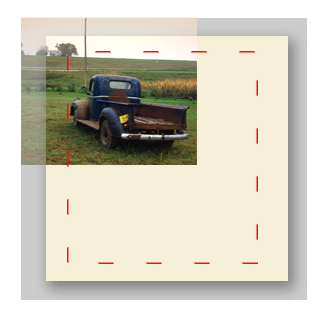
Fig. 73. A full-page image needs to extend past the final page size. |
|||||||||||
|
Return to top or post contents |
|||||||||||||
| CMYK | Definition: A color process used in printing and creates colors through a combination of cyan, magenta, yellow, and black inks.
Used in publishing hard copy books. See also RGB. A.k.a. four-color processing |
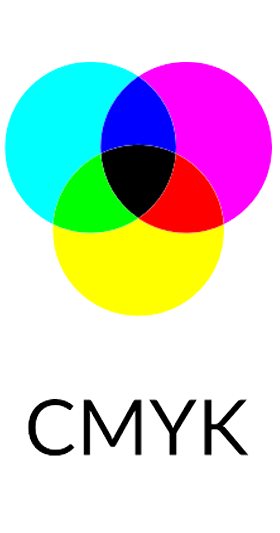
Fig. 74. RGB CMYK is under the CC0 1.0 license, via Free*SVG. |
|||||||||||
|
Return to top or post contents |
|||||||||||||
| crop mark | Definition: Lines on artwork, either digital or mechanical, intended to show where the reproductions should be cut to achieve the final trim size.
A.k.a. registration mark, trim mark |
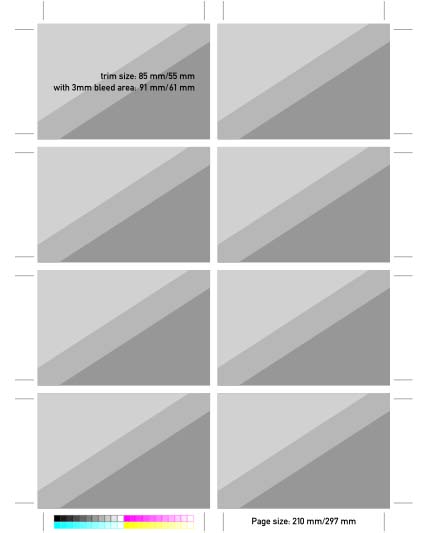
Fig. 75. Vector Graphics of Business Card Layout is in the public domain, via Free*SVG. |
|||||||||||
|
Return to top or post contents |
|||||||||||||
| DPI | Definition: Describes the amount of information contained within an image file, i.e., the number of the dots..
Screen images are usually displayed at 72 DPI on monitors. Printers typically require images of 300 DPI to produce acceptable results. Increasing the DPI simply increases the file size, slowing the file or website down.
A.k.a. dots per inch |

Fig. 76. FOCUS is in the public domain, via Wikipedia.org. |
|||||||||||
|
Return to top or post contents |
|||||||||||||
| four-color printing | Definition: Used by all commercial printers for printing full-color images, including books, catalogs, manuals, magazines, brochures, postcards and any other printed items that contain full color images.
Widely used in both offset and digital printing. The colors used are cyan, magenta, yellow, and black (CMYK). A.k.a. 4-color process printing, 4CP, CMYK, CMYK printing, full color printing, process printing |

Fig. 77. RGB CMYK is under the CC0 1.0 license, via Free*SVG. |
|||||||||||
|
Return to top or post contents |
|||||||||||||
| grayscale | Definition: A technique that creates an image using different percentages of black ink to create varying shades of gray.
This format is generally used to create halftones because it stores the information for each pixel as a level of gray. A.k.a. gray scale, grey scale, greyscale |

Fig. 78. Grayscale by Barbara Bonanno is under the CC BY 3.0 license, via Wikimedia Commons. |
|||||||||||
|
Return to top or post contents |
|||||||||||||
| halftone | Definition: The conversion of a grayscale image using very fine dots for the purpose of printing.
The more dots used, the more detailed the print will look. There are 256 levels of gray in a halftone. Newspapers usually use halftone screens with resolutions of 65 to 85 lpi. Printed books and glossy magazines use better paper and screens with 133 to 150 lpi. A.k.a. halftone-screening Credit to: Boyd |

Fig. 79. Halftone of Dr. B.R. Ambedkar is Govindsivan‘s own work is under the CC BY-SA 4.0 license, via Wikimedia Commons. |
|||||||||||
|
Return to top or post contents |
|||||||||||||
| ImageWrap | Definition: A full-bleed image in a durable matte finish that is glued directly on the front and back cover.
There are no cover flaps on ImageWrap books. A.k.a. canvas wrap, gallery wrap |
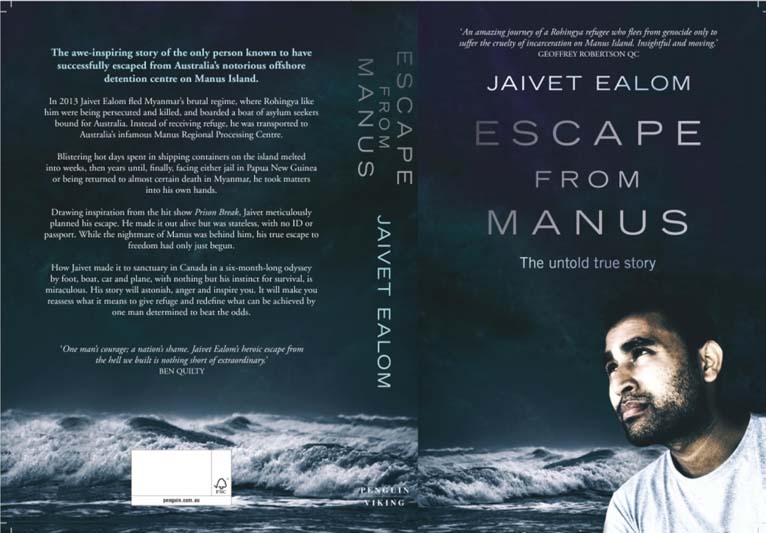
Fig. 80. Escape from Manus — Book Cover with Quotes was uploaded by Dumbhypesjw and is under the CC BY-SA 4.0 license, via Wikimedia Commons, courtesy of Penguin Australia. |
|||||||||||
|
Return to top or post contents |
|||||||||||||
| landscape | Definition: Has a horizontal orientation with its width wider than its height.
A.k.a. horizontal |

Fig. 81. In Landscape and Portrait (which is under the CC0 1.0 license, via FreeSVG), landscape orientation is on the left. |
|||||||||||
|
Return to top or post contents |
|||||||||||||
| portrait | Definition: Has a vertical orientation with its height taller than its width.
A.k.a. vertical |

Fig. 82. In Landscape and Portrait (which is under the CC0 1.0 license, via FreeSVG), portrait orientation is on the right. |
|||||||||||
|
Return to top or post contents |
|||||||||||||
| RGB | Definition: A color process used for screen displays and creates colors through a combination of red, green, and blue pixels.
Used for eBooks and websites. See also CMYK. |

Fig. 83. RGB CMYK is under the CC0 1.0 license, via Free*SVG. |
|||||||||||
C’mon, get it out of your system, bitch, whine, moan . . . which words are your pet peeves? Also, please note that I try to be as accurate as I can, but mistakes happen or I miss something. Email me if you find errors, so I can fix them . . . and we’ll all benefit!
Satisfy your curiosity about other Book Layout & Formatting Ideas by exploring its homepage or more generally explore the index of self-editing posts. You may also want to explore Formatting Tips, Grammar Explanations, Linguistics, Publishing Tips, the Properly Punctuated, Word Confusions, Writing Ideas and Resources, and Working Your Website.
Resources for Bookbinding Terminology
“Best Global Offset Printing Services.” AA Global Offset Printing Services. n.d. Web. 18 Apr 2023. <https://www.aaglobalprint.com/global-offset-printing-services>.
Boyd, John P. “Halftones, Photos and Grayscale Printing.” Chapter 10. University of Michigan. n.d. Web. 19 Apr 2023. <http://www-personal.umich.edu/~jpboyd/eng403_chap10_halftones.pdf>.
“Colophon (publishing).” Wikipedia. 23 Mar 2023. Web. 19 Apr 2023. <https://en.wikipedia.org/wiki/Colophon_(publishing)>.
Cranky. “Term.” AH Library Service. n.d. Web. 19 Apr 2023. <http://www.ahls.us/term.html>.
D, Anna. “Offset vs. Digital Printing: What You Need to Know.” Tips & Inspirations. GotPrint.com. 18 Oct 2021. Web. 18 Apr 2023. <https://blog.gotprint.com/tips-inspirations/offset-vs-digital/>.
“Digital vs. Screen Printing: Which is best for your project?” Graphics Output. n.d. Web. 18 Apr 2021. <https://blog.gotprint.com/tips-inspirations/offset-vs-digital/>.
Friedlander, Joel. “Don’t Let me Find You Bleeding in the Gutter — Understanding Book Terminology.” The Book Designer. 20 June 2011. Web. 12 Apr 2023. <https://www.thebookdesigner.com/dont-let-me-find-you-bleeding-in-the-gutter-understanding-book-terminology/>.
MasterClass. “How to Write a Catchy Back-Cover Blurb That Sells.” MasterClass. 2 Sept 2021. Web. 13 Apr 2023. <https://www.masterclass.com/articles/how-to-write-a-back-cover-blurb-that-sells>.
“Modern Commercial Binding.” “Bookbinding.” Wikipedia. n.d. Web. n.d. <https://en.wikipedia.org/wiki/Bookbinding#Modern_commercial_binding>.
“Parts of a Book: Quire, Colophon, and More.” Words at Play. Merriam-Webster. n.d. Web. 19 Apr 2023. <https://www.merriam-webster.com/words-at-play/parts-of-a-book-terms-and-meanings>.
“Paste-down.” Glossary of Terms. Book Collecting. Biblio. n.d. Web. 13 Apr 2023. <https://www.biblio.com/book_collecting_terminology/Paste-down-79.html>.
Preservation Department. “Glossary of Binding Terms.” University of Florida-Gainesville. n.d. Web. 15 Apr 2023. <https://www.philobiblon.com/gbwarticle/bindterm.htm>.
Reimherr, David. “Is Perfect Binding or Saddle Stitch Better for Your Publication? (+ FREE Perfect Bound Spine Width Calculator).” Shweiki Media. 12 Dec 2014. Web. 30 July 2021. <https://www.shweiki.com/2014/12/binding-choosing-perfect-binding-saddle-stitch-publication/&gr;.
Sutherland, Abigail. “A Visual Dictionary of Book Terms.” Tor.com. 7 Aug 2008. Web. 19 Aug 2021. <https://www.tor.com/2008/08/07/bookterms/>.
“What Are Book Signatures, and What Does Imposition Mean?” Advantage Book Binding and Post Press Services. 7 Mar 2018. Web. 17 Apr 2023. <https://www.advantagebookbinding.com/book-printing/book-signatures-imposition-mean/>.
Pinterest Photo Credits:
King and McGaw Print-on-Demand Machines is David Morgans‘ own work and is under the CC BY-SA 4.0 license, via Wikimedia Commons.


